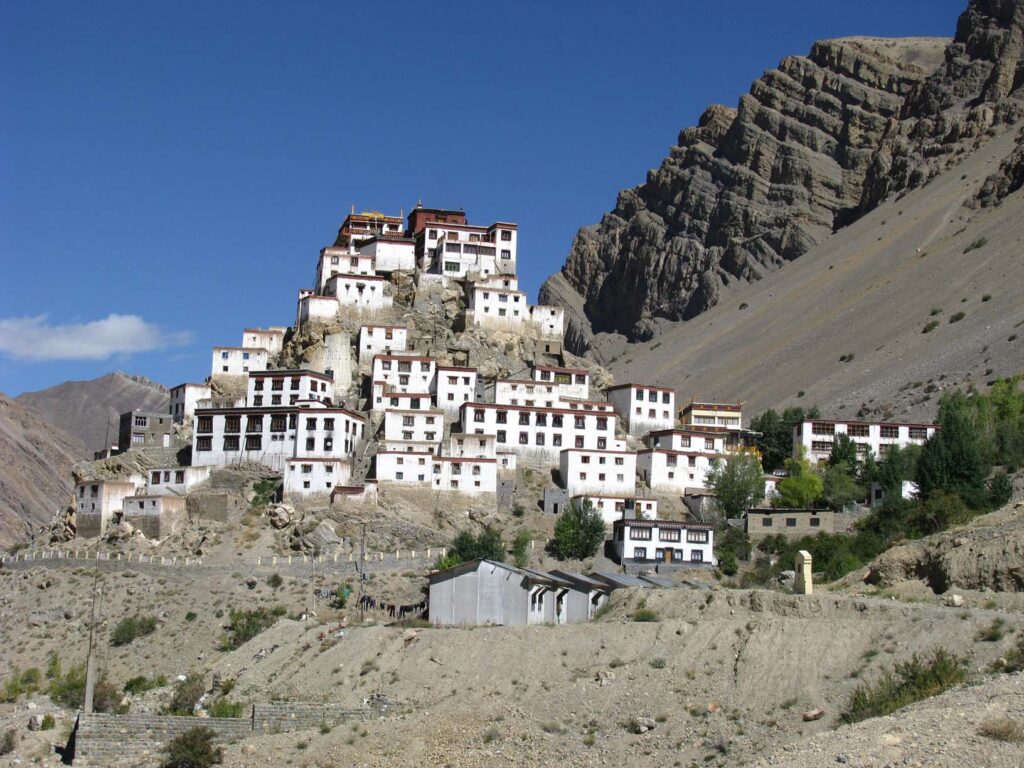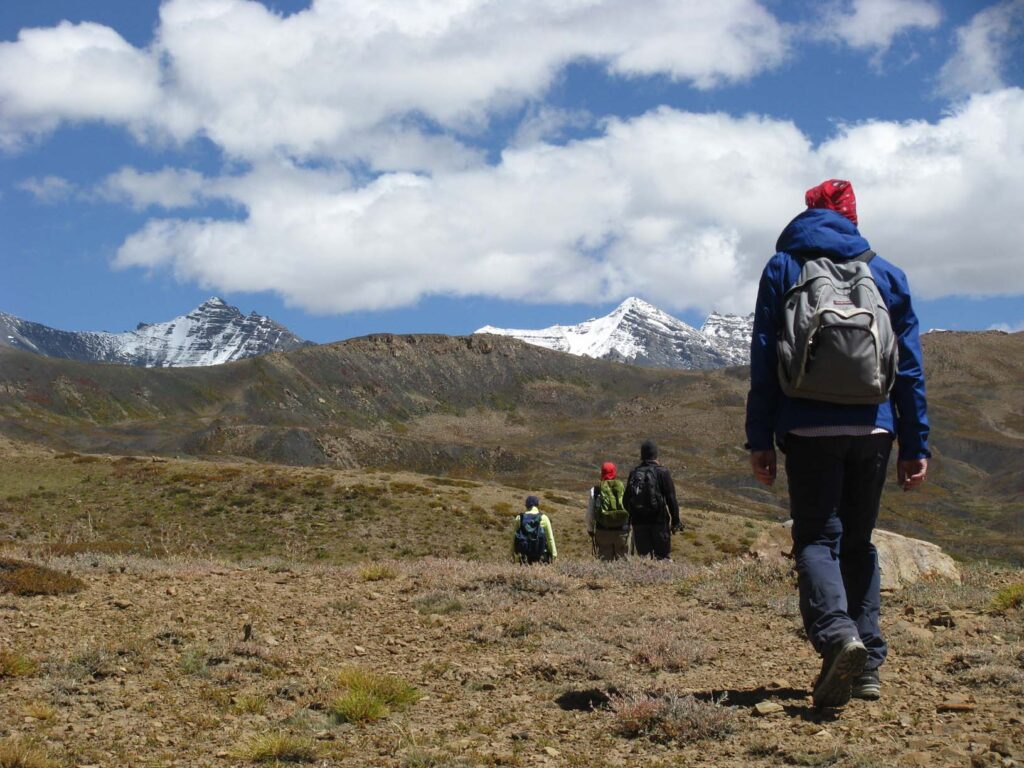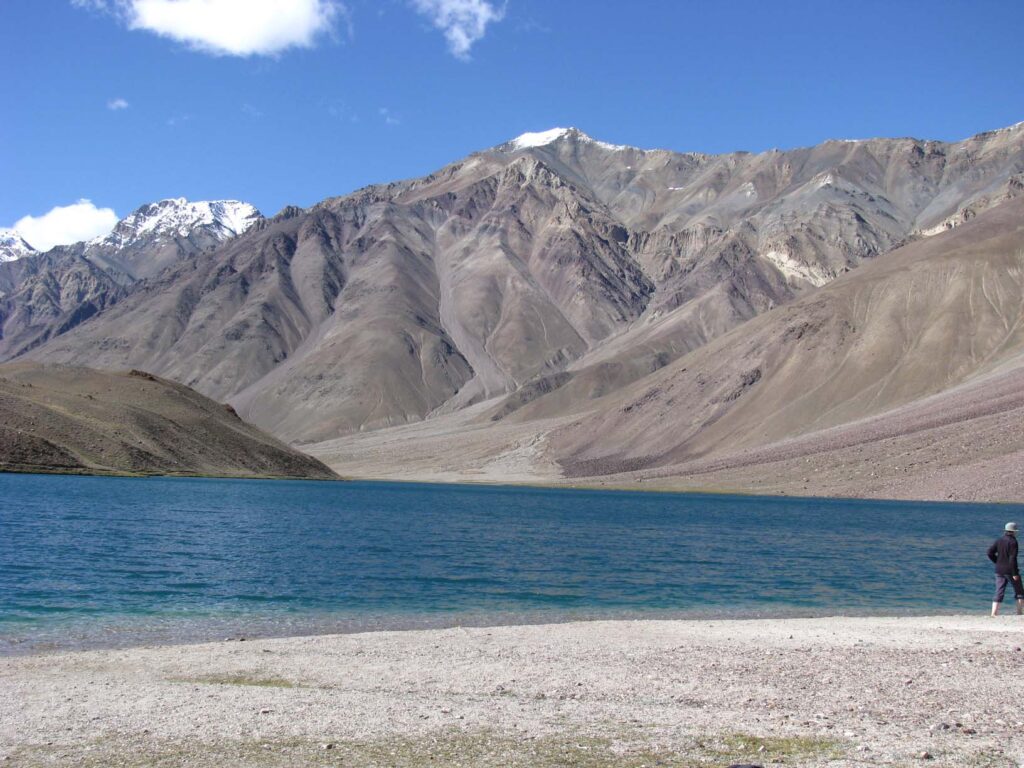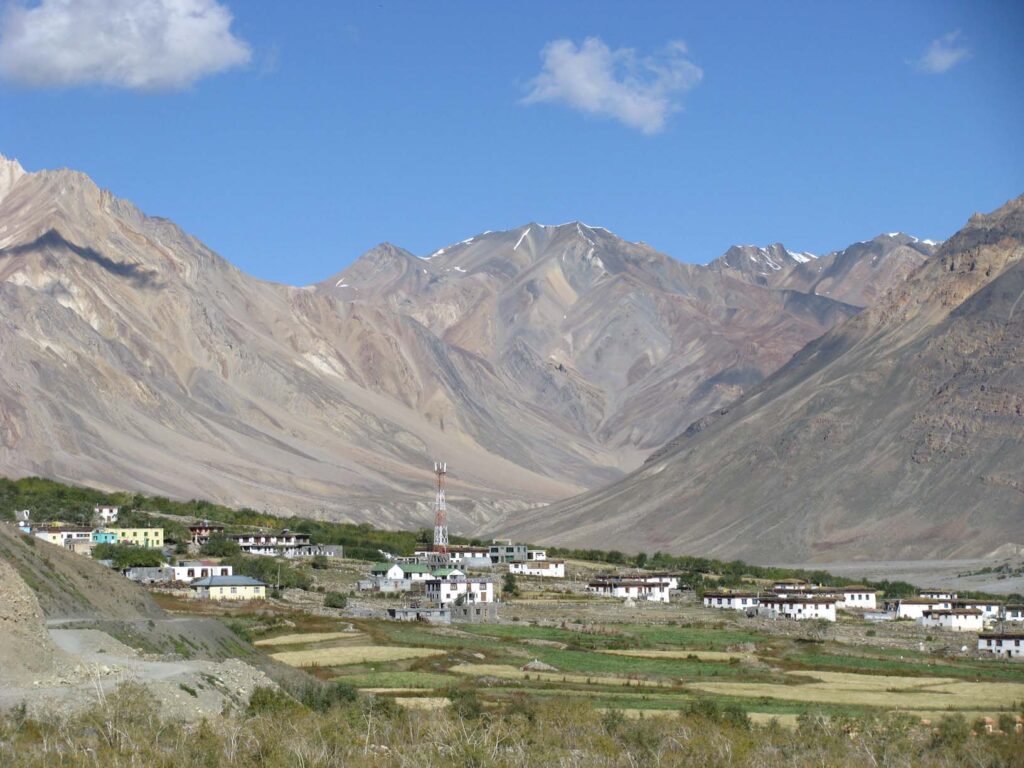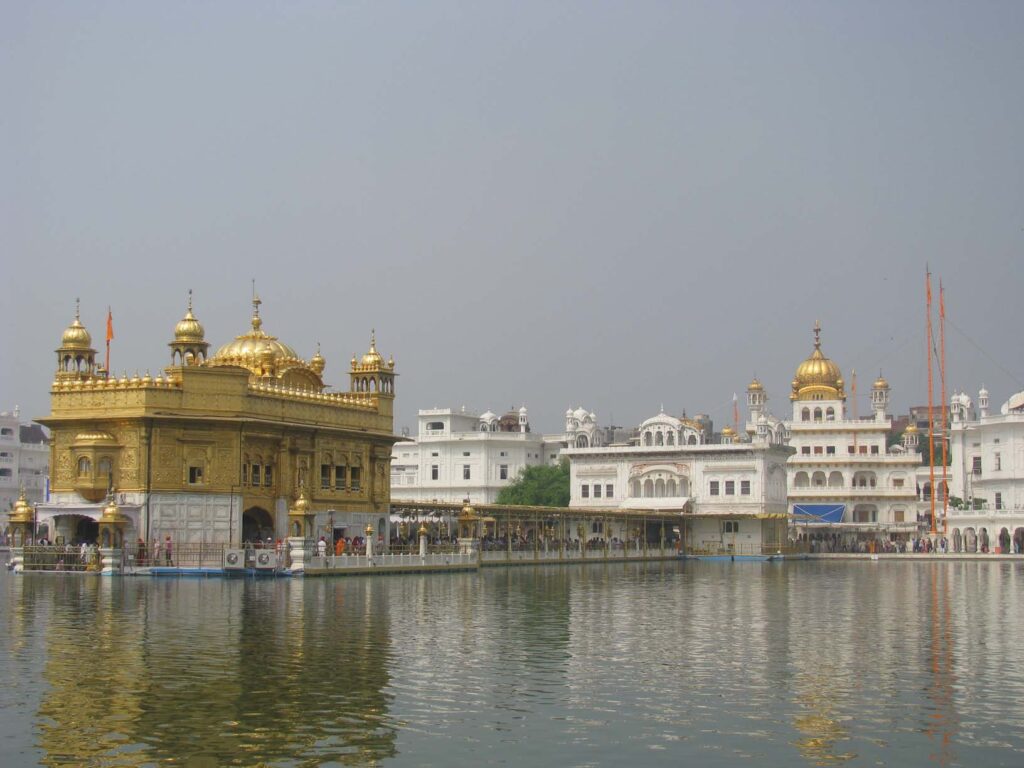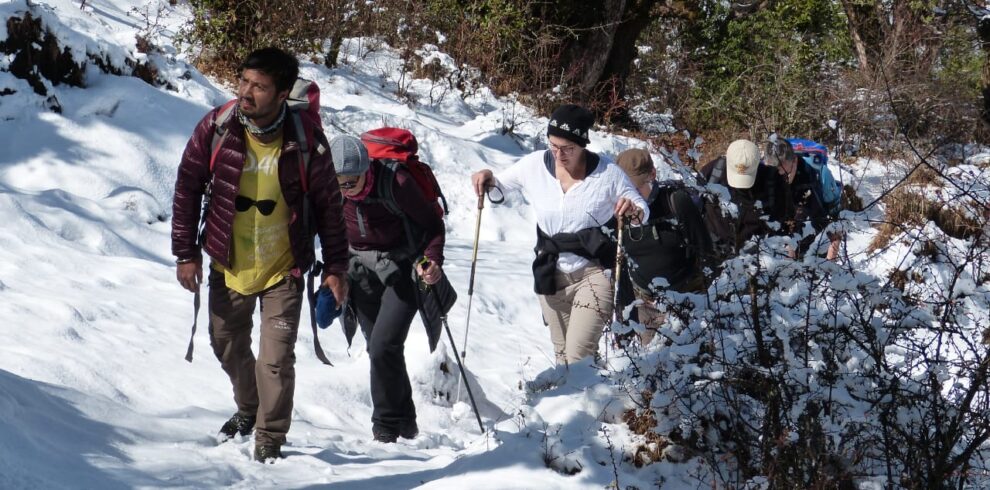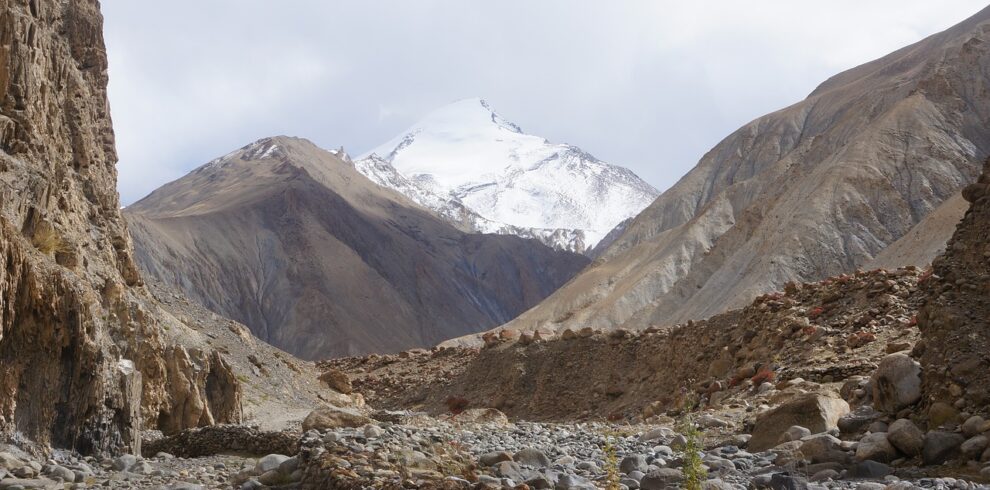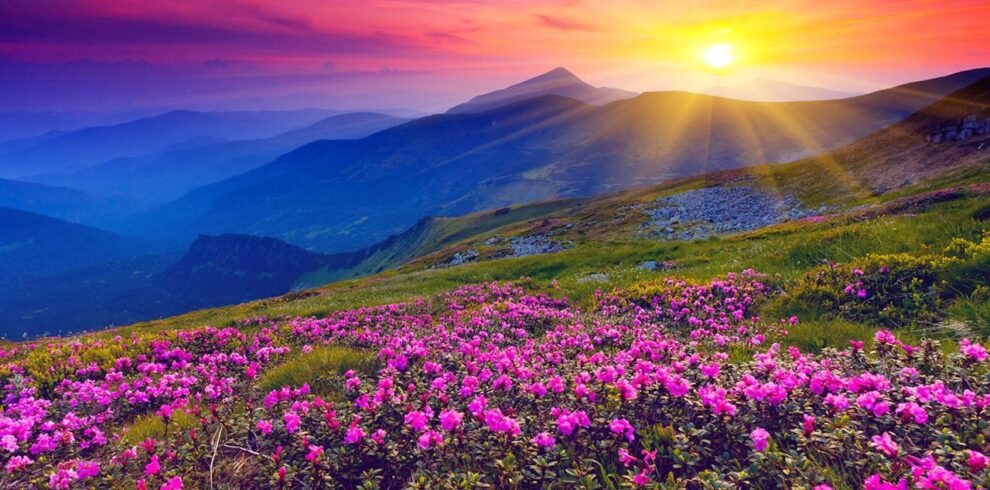Overview
It can safely be called as “Little Tibet” because it has almost the same terrain, vegetation & climate. Spiti also means “Middle Country”. It lies between Tibet, Ladakh, Kinnaur, Lahaul & Kulu. The Spiti river flows fast through deep gorges at some places. The valley is not wide but there are villages and some fields where people grow barley, buck- wheat, peas & vegetables. It has an area of 4800 sq. kms. Some inhabitants have adopted Budhism as there faith and Bhoti is the spoken language. The people are simple and honest. The main Spitivalley is split into eastern and western valleys. They are connected with Ladakh & Tibet on eastern side & Kinnaur and Kulu on western side through high passes.
This very special adventure takes you into the heart of one of India’s best kept Himalayan secrets. This trip is a great way to explore the wonders of Spiti. You will trek in some of the remotest regions of the country. Lahaul & Spiti valley is in every sense as beautiful, if not more, than its famous neighbour, Ladakh. This valley is open only for a few months every year as the high passes leading to it get blocked by snowfall. Along the trip, as you drive, ride, & hike through the wonderful vistas of this valley you come across small settlements with ancient monasteries, chortens, mane walls, fluttering flags, prayer wheels & Buddhist monks, leaving an image which is sure to last a lifetime
The second part of our journey takes us to Dharamsala /Mcleodganj. Dharamsala /Mcleodganj apart from all this fact that the Dalai Lama is based here along with the Tibetan government in exile makes it interesting place to visit. Dalai Lama settled here after his flight across the Himalayas following the Chinese invasion of Tibet in 1959. There is a strong Tibetan influence in Mcleodganj with monks in burgundy robes providing a splash of colour wherever you look.
After this comes Amritser (Punjab). Amritser is the biggest religious place for Sikh people. The Golden Temple is situated here. The first impression of Punjab one gets is that of a land pulsating with prosperity. The plains of Punjab with their fertile soil and abundant water supply are naturally suited to be the bread basket for India. Music and dance is in their blood and that is reflected in the “Bhangara beats” that are famous all over the world today. Due to the presence of the large number of rivers, most of Punjab is a fertile plain. Tributaries of the rivers Indus, ravi, Satluj, Beas and Ghager flow towards the south the south east crossing the entire state. The festivals in Punjab have always been celebrated with much exuberance and fanfare.
Highlights
- Key Monastery
- Dhankar Monastery
- Tabo Monastery
- Abode of Dalai Lama (Dharamshala)
- Golden Temple Sanctum of Sikhs.
Itinerary
Arrive Delhi upon arrival transfer to Hotel. After breakfast 4.5 hours drive bring us to Chandigarh. Upon arrival transfer to the hotel. Rest of the time is free at leisure.
Overnight at the Hotel.
Meals: B
After early breakfast we drive 08 hours to Manali. Upon arrival transfer to the hotel.
Manali which is one of the show place for a lavish display of natural scenery. North, South and West is ostentation of pinnacles and ridges, which, in fine weather, stand outing bold relief against the skyline. Deep, purplish crevices, overhung by scarped cliffs, reach down toward the valleys. Silver streaks of water, glistening in clear sunlight, cascade over perpendicular heights. Lofty thatches, from which the snow has melted, from vivid green patches of grassland, their clarity enhanced by darker surroundings. At the lower elevation and in every direction the eyes may wander, serried battalions of evergreen pine flank the sides of sheltered ravines and ascend in irregular formations, towards rock-crowned crests. Manali is the real starting point of an ancient trade route which crosses the Rohtang and Baralacha passes and runs, via lahaul and Ladakh to Kashmir, while divergent paths connect it with Spiti, Zanskar, Rupshu, Tibet and other remote countries in central Asia.
Overnight at the hotel.
Meals: B
Day to acclimatization.
Today we drive toward the Rohtang pass but we drive through the Atal tunnel build at an altitude of 3000 meters, the longest highway tunnel in the world around 9.2 km long and drive to Sissu in Lahaul valley. We will find a dramatic change and contrast in the landscape. We will make a small acclimatization hike here for a couple of hours and have lunch. Later we drive back to Manali.
Overnight at the hotel.
Meals: B
After lesiurely breakfast 03 hours drive bring us to Chatru. Later we make 02 – 03 hours of acclimatization walk. Chatru is a small hamlet situated in Lahaul district. Chatru is stand solitude like an oasis in the middle of the cold desert. Chatru can also be reached by the most popular trek Hampta pass from Manali.
Overnight Camping
Meals: B, L, D
05 hours drive to Kaza. Today drive is very insteresting as we drive into a totally different area and totally different culture. We corss Kunzum pass. After passing Kunzum pass we enters into Spiti Valley. Geologically and archaeologically, Spiti is a living museum. Monasteries, villages, high altitude farming, a rugged / rocky terrain and rocky mountain slopes sweep down to the riverbeds giving the landscape a moon-like appearance. After crossing Kunzum pass (4550 meters) we drive to the first village of Spiti called Losar. Kaza situated on the left bank of Spiti river at an altitude of about 3800 meters is known for its most stunning 360 degrees views all around it and a must visit for any adventure and nature lover. Kaza has monasteries, world's highest petrol pump and amazing high altitude views. Kaza lies on the Tibetan Plateau and one gets a feel of Tibet and Ladakh moving around the area. On the way visiting Ki monastery. Ki Monastery which is said to have been founded by Dromtön (Brom-ston, 1008-1064 CE),. The walls of the monastery are covered with paintings and murals, an example of the 14th century monastic architecture, which developed as the result of Chinese influence.
Key monastery has a collection of ancient murals and books, including Buddha images. There are three floors; the first one is mainly underground and used for storage. One room, called the Tangyur is richly painted with murals. The ground floor has the beautifully decorated Assembly Hall and cells for many monks. Key Gompa now belongs to the Gelugpa sect, along with Tabo Monastery and Drangtse Monastery, one of three in Spiti. "The monastery of Kee, for instance, accommodates nearly 250 monks, who reside within the sacred walls in winter, and stay during the summer with their parents or brothers, working in the fields, or employed in carrying travelers' goods. Today we will be enjoying the spectacular landscapes of Spiti from a totally different perspective
Overnight in a Guest House.
Meals: B, L, D
45 minutes Drive to Langza from Kaza involves a journey on one of the world’s highest motorable roads. Langza village is one of the most picturesque villages of Spiti located on the highland meadows with snow capped mountain ranges forming the backdrop.
The village is adorned by a beautiful image of Buddha and an ancient temple more aptly called 'Lang' said to be the Abode of the Deities of the region and over 1000 years old. At the top of Langza Gogma is the Lang (village temple), a 600 year old Buddhist temple. From here we start our trek to Komik. This trek runs through the natural fossil centre and a substantial distance is covered while exploring this ancient heritage. As the fossil centre culminates, the trek continues with a gradual ascent along a ridge for another hour. Thereafter, we descend to Komic village. It will take nearly 06 hours to reach our camp site. Komic monastery has the honor of being the world’s highest motorable monastery at 4587 mts.
The story behind this monastery goes like this:- As per the sacred 'Gum Maro' (Red Box) kept in the monastery, it was foretold in Tibet that a monastery would be built in Spiti. The Monastery was to be built in the backdrop of a mountain which would be in the shape of a snow lion on the left and a beheaded eagle on the right hand side with 4 springs in the vicinity. The area in between these mountains was to be in the shape of the eye of a snow cock, which was foretold as the exact location where the Monastery would be built. On the basis of this, the area was to be named Komic ('Ko'– Snow Cock, 'Mic'– Eye). The Komic Monastrery dates to the early 14th century and is built like a fortified castle with massive slanted mud walls and battlements with vertical red ochre and white vertical stripes.
Overnight Camping.
Meals: B, L, D
A slow ascent from Komic village lasting about 1 hour 30 minutes brings us to Chamai Lapchai (4600m), the first pass en-route to Demul. From here we will have a panoramic view of various peaks of the region. From here a gradual walk of about 3 hours brings one to the grazing lands of Demul village. Wildlife such as the Tibetan Wolf, Red Fox and the Snow Cock can also be sighted here. Thereafter we head towards Young Lapchai (4800 mts), which is one of the highest trekking passes in Spiti. Like most of the passes this one also has quite a few visual delights to offer. A steep descent takes us to Demul village which is adorned by Mane walls (stones intricately carved with religious prayers). The total walk is about 07 hours incuding rests and lunch time.
Overnight Camping.
Meals: B, L, D
Today is a relatively easier walk. Immediately out of Demul is the Zong phu which is about a 20 minute walk from the village. The steep descent continues till the valley floor of the Padang River. From here we move to the hamlet of Sanglung (3612 mts), our entry to the Lingti valley, an hour long walk will take us to the bed of the Lingti River. This trek will take approximately 4 hours and thereafter once we reach to the road head, our Vehicle will be there to take us to Dhankar which will take another 40 minutes of the drive. This entire stretch is full of diverse flora. After crossing over the ridge, the rock and mud pillars of Dhankhar come into view. A gradual decent brings one to the remains of the Dhankhar fort. The monastery here is even older than the Tabo monastery and has a very dramatic setting. Dhankar monastery is at the perfect setting for any monument in this world. The monastery lies on a cliff and from here you can see an amazing view of the Spiti river. It is situated at an elevation of 3,894 meters in the Spiti Valley between the towns of Kaza and Tabo. The complex is built on a 1000-foot (300-metre) high spur overlooking the confluence of the Spiti and Pin Rivers - one of the world's most spectacular settings for a gompa. Dhang or dang means cliff, and kar or khar means fort. Hence Dhankar means fort on a cliff. The monument is one amongst the 100 most endangered monuments in this world and restoration work is underway. The monastery houses a statue of "Vairochana" which shows 4 complete figures of Buddha seated back to back. Also, in possession of the monastery are some Buddhist scriptures, paintings and sculptures. Dhankar was the traditional capital of the Spiti Valley Kingdom during the 17th century and has some features dating back to the 12th century.
After visiting Dhankar 01 hours drive bring us to Tabo.
TABO "Ajanta of the Himalayas", as the Tabo Chos-Khor Monastery is popularly known, was founded in 996 A.D., The Year of the Fire Ape by the Tibetan Calendar. The Tabo Gompa, or Buddhist monastery, is second in importance only to the Tholing Gompa in Tibet in the entire Himalayan region. It was developed as an advanced centre for learning by the great teacher and translator Lotsawa Rinchen Tsang Po, the king of western Himalayan Kingdom of Guge -- also known as Lha Lama Yeshe O'd or Mahaguru Ratnabhadra. In the present, it is the preserver of the Buddhist Legacy and is one of the most important Gompa of the entire Tibetan Buddhist world. The monastery temples house a priceless collection of manuscripts and thangkas (Buddhist scroll paintings), historical, exquisite statues in stuccos, frescos and murals depicting tales from the Mahayana Buddhist Pantheon. Every inch of wall is covered with fine paintings in astonishingly well preserved condition. Not much has changed since 996 AD at the Tabo Monastery. The lamas still perform tantric rites in the temples. They perform most of their morning 'poojas', and also live in the 'new' temple. Chanting starts at 6 a.m. sharp. The monastery complex holds 9 temples, 23 chortens, a monk's chamber and an extension that houses the nuns’ chamber.
Overnight in simple guest house.
Meals: B, L, D
Early morning witness the morning prayers at the Monastery. Later after breakfast we drive nearly 4 hours to our camp.
Overnight Camping.
Meals: B, L, D
We board the vehicles and drive 01 hour to Kunzum La (4550m) and from there we walk to Chandartal. This walk will take around 03 to 04 hrs and there are excellent views throughout. The lake with its green water is extremely enchanting with the snow clad mountains providing an excellent background. This is a beautiful lake in the heart of Peerpanjal mountain range at an altitude of about 4,270 metres in Himalayas. This lake looks especially beautiful on a full moon night which is why is it is call "Chandra" (meaning Moon) and "Taal" (meaning lake).
During the day, the lake appears blue in color, and a greenish tinge appears towards the evening. The lake is situated on a plateau overlooking the Chandra River which originates from a glacier near Bara-lacha-la. Mountains of Scree overlook the lake on one side, and a magnificent cirque presents a view on the other. The lake is accessible on foot only for few months in a year, from May to September.
Overnight Camping.
Meals: B, L, D
Forenoon we look around the beautiful surroundings. Now there’s a road going up till almost Chandartal. Our jeeps/mini coach will meet us here and we drive 03 hours to Manali via the famous Rohtang pass. we carry picnic lunch Check into a hotel. Evening at leisure in Manali. One can roam around the market and do some shopping.
Overnight in a hotel.
Meals:B, L
08 hours drive to Mcleodganj and later visiting the Residence of Dalai Lama which is popularly known as Dalai Lama temple.
The Kangra Valley is situated between the Dhaula Dhar and Shivalik foothills. It is named after the town and fort of Kangra. But now the largest and the main center here is Dharamshala. Dharamshala is set against the backdrop of the dramatic Dhauladhar Mountains. Perched on the high slopes in the upper reaches to the Kangra Valley, it is a charming town with elegant colonial bungalows nestling in the thick conifer forests. Dharamsala is divided into two distinct parts: Lower Dharamsala is the civic and business area with the courts and kotwalis bazaar; upper Dharamsala is composed of places with unexpected names riniscent of imperial days like Macleod Ganj and Forsyth Ganj. Dharamsala is also the home of Dalia Lama, the spiritusl heat of the Tibetan Buddhists, who is now headquartered at Macleodganj. Also known as little Lhasa, Macleod Ganj is and enchanting world in itself where the spinning wheels and fluttering prayers flags spread the message of peace and funeral harmony. There is strong Tibetan influence in Macleod Ganj with monks in deep red providing a splash of colour wherever you look. The Dalia lama settled here after his flight across the Himalayas following the Chinese invasion of Tibet in Oct 1959.
Overnight in a hotel.
Meals: B
05 hours drive brings us to Amritsar.
Amritsar: The Golden Temple or Darbar Sahib situated in Amritsar. Punjab is the most sacred temple for Sikhs. It is a symbol of the magnificence and strength of the Sikh people all over world. In its architecture are included, symbol associated with other places of worship. This is an example of the spirit of tolerance and acceptance that the Sikh philosophy propounds. The Harmandir Sahib or the sanctum was envisioned by Guru Arjan Dev. This was conceived by him to reflect the resoluteness, clarity and simplicity of the Sikh religion. The Harmandir Sahib today stands as the hallowed symbol of the indestructibility of the Sikh faith. The gilding marble, mirror and inlay work on the Harmandir Sahib came much later. It was the nineteenth century during the region of Maharaja Ranjit Singh, that the proud people of Punjab lavished their wealth on their shrine in Amritsar. The Granth Sahib, the holy books of Sikhs was installed in the Harminder Sahib itself in 1604 three years after its completion. The location of the granth sahib here adds to the sanctity & reverence of the Harminder Sahib. Here lies the heart of Sikhism. The most important tourist centre in the state is Amritsar with its Golden Temple. This temple is considered to be the holiest of all the pilgrimages of Sikhism and houses “Akal takht”, the supreme governing body of Sikhism. The Jalianwallah Bagh is a small park in the city where many pilgrims were massacred by the British police in the year 1919. Wagah is the only open land point between India and Pakistan. The changing of guards and the ceremonial lowering of the flags ceremony at sundown and great tourist attraction.
Overnight at the hotel.
Meals: B
Morning visit to the holiest place of Sikh Golden temple. After exploring the Golden temple drive back to hotel for breakfast and later drive to airport to connect the flight for Delhi.
Overnight at the hotel.
Meals: B
After breakfast we will proceed for sightseeing of Delhi. Thereafter we proceed for the sightseeing tour of Old and New Delhi showing the remarkable contrast between the old city and the spacious layout of the New City. There is much to see and do in Delhi, Capital City of independent India. Seven cities have existed here since the 10th century, ruled over by Rajputs Turks, Afghans, Mughal and the British. Delhi is two cities in one – the Old Delhi of the Mughals, created by Shah Jahan and still a conglomerate of medieval palaces, forts, mosques and bazaars; and the New Delhi built by the British, an elegant metropolis of road avenues, stately homes and landscaped gardens. The coexistence of the old and the new, common features of modern Indian cities is nowhere more obvious than in Delhi. Delhi is the seat of government, and what a visitor sees here is a reflection of what is happening in the country as a whole. To begin with, Delhi- both Old and New – is a shopper’s paradise. India’s innumerable crafts and silks are all available here at various state emporia, Central Cottage Industries and in privately owned shops. You can eat to your hearts latest in Delhi, in little roadside dhabas that dish out mouth-watering kebabs, naans and an exquisite range of Tandoori cuisine, cooked fresh and on the spot. You could also spend a fine evening at fabulous restaurants in deluxe hotels, which offer an equally wide variety of cuisines – Indian, Continental and Oriental.
Later in the evening transfer to the International airport to connect the homeward flight.
Meals: B
Inclusions / Exclusions
Inclusions:
- Private Non-airconditioned Coach/Car transportation throughout the tour as per programme mentioned above except in the Amritsar, Chandigarh and Delhi where it is going to be Air-conditioned transport..
- Tourist Class comfortable Air-conditioned Hotel accommodation with breakfast provided throughout the tour as per programme.
- Simple accommodation in the mountains.
- 2 men sharing mountain tents during the trek. Dinning tents, kitchen tent, toilet tents, camp stools etc shall be provided while on the trek. We will provide sleeping bags and sleeping mattresses..
- Meals included as per abbreviations as above programme: B = Breakfast, L = Lunch, D = Dinner
- Domestic flight Amritsar to Delhi
- All entrance fees at all places
- All necessary permits for trekking.
- Qualified Language speaking Tour escort throughout the trip to ensure smooth arrangements.
- 5% GST (Goods and Service tax)
- Our professional charges
Exclusions:
- The price do not include any expenditure of personal nature such as table drinks, mineral water, laundry, telephone calls, meals where not included, tips to room boys, camp staff, drivers, evacuations of any casualty, medicines, camera fee if any and all those services which are not listed above. Tipping is customary in India.
Map
Cancellation Policy
Cancellations prior to 30 days from the start of the trip
We shall charge only the services which are paid and non-refundable and our professional charges on the actual basis. This means we will pay you nearly 90% of the payment and if you want to adjust your payment for the next trip then it will be adjusted. But also note that the balance payment for the future tour shall be paid by the client.
Cancellation between 24 days and 14 days to the start of the trip
We will refund you 70% of the payment and if you want to adjust your payment for the next trip then it will be adjusted. But also note that the balance payment for the future tour shall be paid by the client.
Cancellation between 14 days and 10 days to the start of the trip
We will refund you 50% of the payment and if you want to adjust your payment for the next trip then it will be adjusted. But also note that the balance payment for the future tour shall be paid by the client.
Cancellation less than 10 days to the start of the trip
It will be calculated and hence the refund is initiated.

